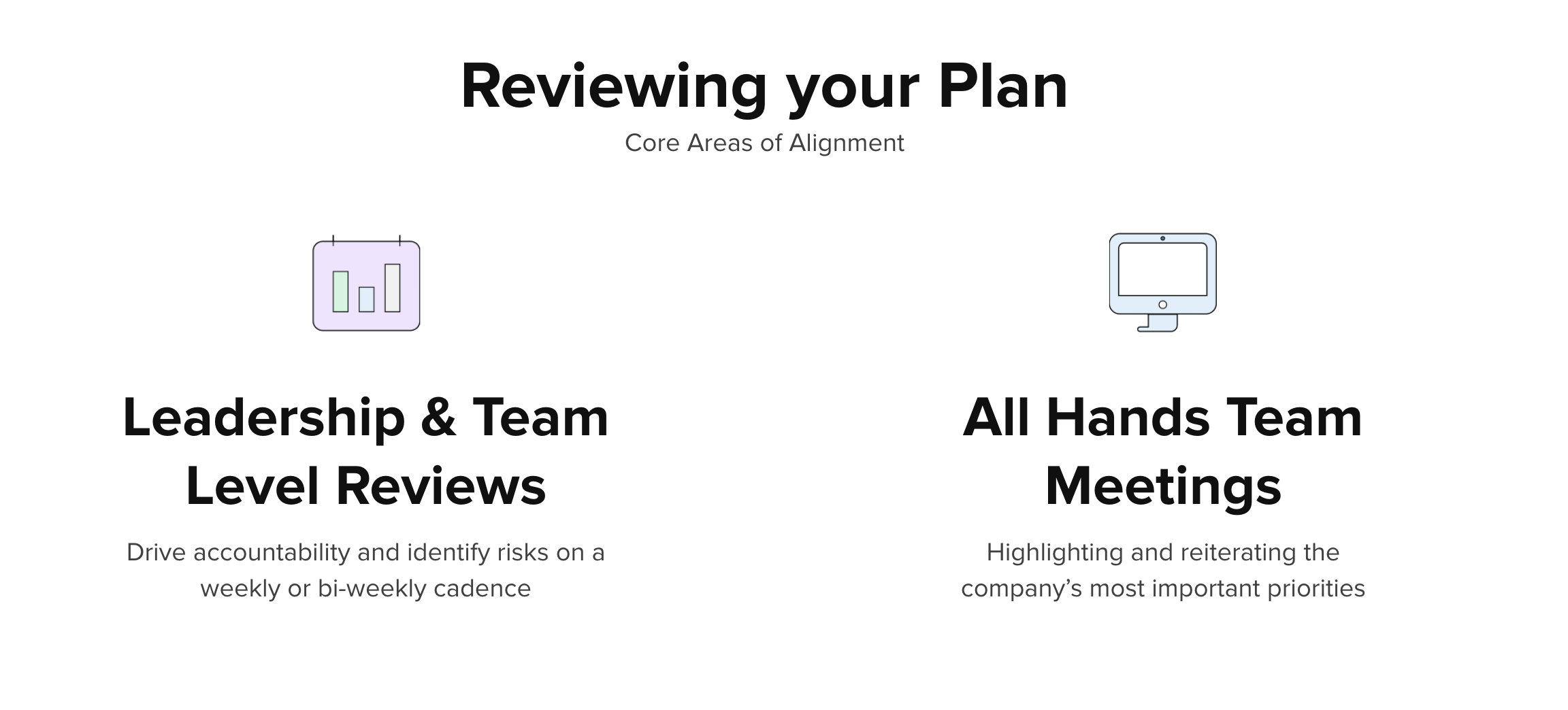
This post was slightly modified and originally appeared in Issue 9 of the Ask a Chief of Staff Newsletter
To say that the market conditions from 2022 to 2024 have shifted, would be quite an understatement. After years of continued growth and smooth sailing for many companies, 2023 and 2024 brought about more challenging market conditions that have forced leaders to rethink hiring plans, budget allocation, and overall go-to-market strategies.
For most companies, the past few months have been spent revamping these strategic plans to ensure they are able to chart a course through 2024 that keeps them on track for the long-term vision of the company heading into 2025. One area more than any other will be tasked with navigating these tumultuous conditions: Strategy and Operations.
Companies are investing earlier and more aggressively in Strategy and Operations teams, and this isn't slowing down any time soon. The rise of the Chief of Staff position in particular has only added to the role Strategy and Operations play in turning strategic planning and execution into a competitive advantage.
While many companies have been spending the past few months planning for 2024 and what’s to come, the reality is that planning is the easy part. Ideating on potential initiatives, whiteboarding new ideas, or even just digging into a spreadsheet and modeling out numbers happens in a vacuum. The application and delivery of all those hours spent planning, ideating, and forecasting now becomes a reality. And for many companies, a reality that almost certainly won’t go as expected.
So as we head into the new year, we wanted to share how Chiefs of Staff and Strategy and Operations Leaders can help make the transition from strategic planning to execution.
Leadership Alignment on Areas of Focus
As the calendar changes over and companies look towards the new year, there is often an unbridled sense of optimism and urgency about what lies ahead. With goals for the coming year laid out in front of them, Leaders are tasked with creating the momentum for their teams heading into the new year.
However, now more than ever, it’s critical that the momentum and energy through the new year is channeled in the right direction. And, although cliche, it starts at the top.
After spending countless hours in offsites working through strategic initiatives, finalizing budgets, and discussing goals for the coming year, leadership has to be aligned with one another on how that comes to fruition. Far too often, what gets discussed never gets agreed upon. Whether it be the dependencies that exist between different departments or the push and pull of resource allocation, if Leaders aren’t aligned on the priorities, then how can they expect their teams to be?
The Chief of Staff plays a pivotal role in this alignment.
The Chief of Staff position is often the most capable, and even responsible for ensuring communication across teams, there has to be an intensified focus on this area out of the gates. As we will touch on a bit later, this starts with establishing a clear, consistent way of driving communication and accountability on progress in a way that benefits all of the key stakeholders.
So as we move past company kickoffs and into the heart of Q1, it’s critical that the Chief of Staff takes a healthy account of where things stand and how aligned their team is on the areas of focus for 2024.
Empower Employees through Clarity
While a successful 2024 starts at the top, the follow-through comes from the teams across the business. One thing we found across company after company in 2023 is priority fatigue. For many employees, it felt as though either everything was a priority or nothing was a priority.
Although we’ve spent the better part of our time discussing alignment on priorities, something just as important is alignment on what isn’t a priority.
In a year like 2024, where many companies will be asked to do more with less, laser-focus on the right priorities can make or break a successful year. This is why it’s so important that you don’t simply leave the communication of company priorities to your company kickoff or monthly all-hands meetings.
Instead, the Chief of Staff should be focused on providing a single, unified view of company priorities that can be referenced at all times by employees. Not only for their understanding of where the company wants to go, but also, how their work ties into that direction.
By providing this clarity, employees can work more effectively and autonomously, because they have a clear way of discerning what should and shouldn’t be a focus of their work. Additionally, a unified view of company strategy can also highlight cross-departmental dependencies that help provide the ‘why’ behind certain initiatives.
When employees can see how their work is contributing to the long-term goals of the company, as well as the immediate execution of work across other teams, we now start to drive better insight into the progress of initiatives. Not by giving employees the sense that they are punching a time-card to show they worked this week, but by empowering them with meaning to their work.

Establish Your Operating Rhythm
Setting a strong foundation of alignment with the leadership team that connects with clear visibility for employees can be a powerful recipe for success. If you can do these first two items well from the start, the likelihood of success is increased exponentially, and you will almost certainly feel the impact of those tailwinds to start the year.
However, what many great Strategy and Operations leaders will tell you is that as you move through the rest of the year, expect the rough patches to come.
And choppy waters require seasoned navigators.
For many in the Chief of Staff role, this might be their first time in the position. For others, this might be the first difficult economic landscape. Yet, regardless of the years of experience in the role, the tools at your disposal to set a course and make your way through the storms and turbulence will come down to the principles instilled in your operating rhythm.
An operating rhythm of your organization is the frequency, structure, and process for reviewing the strategy and execution of that strategy over the course of the year. For each company this will look a bit different, and should take into account the culture of your company.
However, the operating rhythm should set the pace and regularity for how your leadership team goes about reviewing the areas of focus you set for the year, discussing areas of opportunity and potential risk, as well as the cadence for how often you meet to do so.

The company size and stage will play a critical role in determining the frequency for how often you meet as a leadership team. But once set, ensure your leaders are committed to the process.
For companies who have a strong rhythm in place, ensure it stays an area of focus. But don’t be too rigid. Even the best operating frameworks might need to be tweaked as the company grows or new leadership team members are added. As the Chief of Staff, be willing to question the existing process if you see an opportunity to evolve.
If there isn’t currently a clear operating rhythm in place, then make it a priority to do so. As quickly possible.
It won’t be perfect. Nothing ever is at the start. However, the commitment to ensuring you have a clear forum for how the leadership team reviews priorities or discusses new areas of opportunity is critical to success in a dynamic environment. Additionally, don’t underestimate the importance of people simply showing up. Making these meetings a priority is crucial, because as we know, leadership team members are busy. Some might even take any opportunity that presents itself to avoid yet another meeting.
Yet, we can’t advise strongly enough how important it is for an organization to have an operating framework that surfaces proactive conversations, rather than making reactive decisions without the necessary context.
Harness the Momentum of Your Company’s Strategy
Over the past few years, we have seen a shift in the way companies go about Strategic Planning. Rather than a static, manual process that feels more like checking a box, Strategy and Operations leaders are evolving their process to be more dynamic, combining real-time insights with engagement across all areas of the organization.
From working with hundreds of Chiefs of Staff, the team at Elate has seen that when done well, this evolution can serve as a competitive advantage on how an organization delivers on the objectives. However, the most critical part of a dynamic planning process is the transition from planning to execution.

While it might seem like second-nature to Strategy and Operations leaders tasked with bringing the company's strategy to life, countless companies have fallen into the trap of assuming that the transition will happen naturally.
It takes work.
From gaining alignment with the leadership team from the onset to communicating that strategy to employees, it’s important that we set a strong foundation to start the year. However, you need to have a process that the foundation is built upon. The operating rhythm takes commitment and communication. When schedules get hard to coordinate or leaders lose interest, don’t give into the temptation to write it off as another meeting. The moment you do, you will be sailing blindly into night hoping for success.
If you’re interested in learning more about how Elate is partnering with Chiefs of Staff across leading companies like Seismic, Paystand, Jobvite and so many others, reach out to our team today. We’d love to share more!


